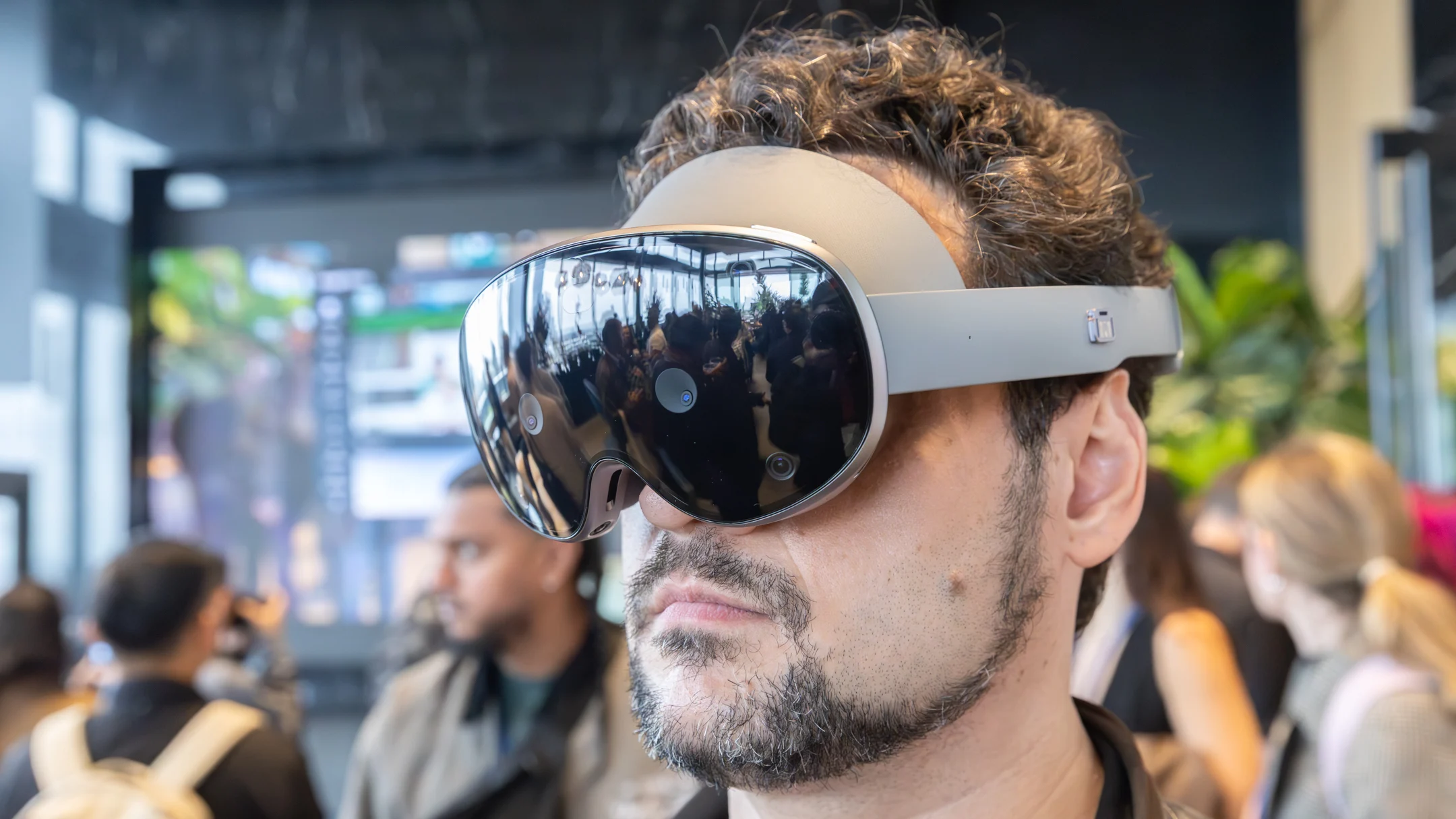Samsung and Google Unveil the Galaxy XR: A Bold Move to Challenge Apple’s Vision Pro
Samsung and Google Unveil the Galaxy XR: A Bold Move to Challenge Apple’s Vision Pro
By
David Goldfarb
Last updated:
October 22, 2025
First Published:
October 22, 2025

Photo: PCMag
Seventeen years after the iPhone sparked the smartphone revolution, the tech world is searching for the next major leap — and Samsung, in partnership with Google, believes it has found it. With the launch of the Galaxy XR, Samsung is entering the high-stakes race to redefine how humans interact with technology, blending the digital and physical worlds through artificial intelligence and mixed reality.
The Galaxy XR headset officially goes on sale this week for $1,800, roughly half the cost of Apple’s Vision Pro, and serves as Samsung and Google’s most ambitious hardware collaboration to date. It’s powered by Qualcomm’s latest Snapdragon XR2+ Gen 2 chip, optimized for high-performance spatial computing, and runs on a customized Google mixed reality platform that integrates directly with Gemini AI.
Early adopters will receive perks like a 12-month subscription to YouTube Premium and free access to Gemini Advanced, Google’s paid AI assistant, hinting at the headset’s deep integration with generative AI technologies.
A Leap into Immersive Computing
At its core, the Galaxy XR combines augmented and virtual reality into one seamless experience. Through high-resolution 4K micro-OLED displays and advanced passthrough cameras, users can interact with apps, media, and 3D environments that appear to float naturally in front of them.
Control happens through hand gestures, eye tracking, or voice commands, eliminating the need for controllers entirely. Reviewers who tested the headset during Samsung’s New York demo event praised its responsiveness and precision — especially when paired with Gemini’s AI-driven workspace controls.
In one demo, users could ask Gemini to organize virtual windows, identify landmarks in Google Maps, or even generate AI videos using Veo, Google’s new text-to-video tool rivaling OpenAI’s Sora. The assistant processed commands instantly, even in noisy environments, demonstrating how conversational AI could redefine interface design in the coming years.
A Familiar Design, But With a Different Vision
At first glance, the Galaxy XR bears a striking resemblance to Apple’s Vision Pro — complete with a curved glass front, aluminum frame, and an external battery pack that connects via cable. However, Samsung’s design philosophy differs in one key aspect: it sees the headset not as an endpoint, but as a stepping stone toward something smaller and more personal — AI-powered smart glasses.
Samsung and Google are already working with eyewear brands Warby Parker and Gentle Monster to develop these next-generation AI glasses. These devices will reportedly integrate Google’s Gemini assistant at their core, allowing users to access real-time information, translations, and creative tools directly through voice and visual interaction.
At Google I/O 2025, the company teased early prototypes of these glasses, though no release date has been confirmed. Historically, Google’s track record with ambitious hardware — from Google Glass to Nexus Q — has been rocky, but this time the tech giants insist the landscape is ready. With generative AI reshaping consumer behavior, they believe the leap from headset to everyday eyewear could finally succeed.
AI Privacy and Performance Trade-Offs
Despite its potential, the Galaxy XR faces a significant challenge: privacy. Gemini’s AI models operate primarily in the cloud, meaning the headset must transmit visual and behavioral data to Google’s servers for processing. Unlike Apple, which runs many of its AI features on-device using private cloud technology, Google still relies heavily on centralized data systems.
That raises understandable concerns about how much the company sees — especially when the headset’s cameras and sensors are always active. While Samsung promises strong encryption and user consent controls, privacy-conscious consumers may remain skeptical.
The Road Ahead for AI-Powered Wearables
Samsung’s foray into mixed reality comes as global enthusiasm for the metaverse has cooled. Meta, which once positioned itself as the leader of virtual worlds, has sold only around 2 million pairs of its Ray-Ban Meta smart glasses since launch — a modest figure compared to Apple’s 200+ million iPhones sold annually.
Still, the convergence of AI and wearable computing presents a long-term opportunity that the world’s biggest tech players are unwilling to ignore. Industry analysts project that the extended reality (XR) market could reach $120 billion by 2030, driven by advancements in AI, miniaturized optics, and natural interaction interfaces.
Samsung and Google’s strategy is clear: build consumer familiarity with AI-enhanced immersive tech now, then transition that trust and functionality into lightweight, socially acceptable glasses.
A Glimpse of the Future
While the Galaxy XR may not replace your smartphone today, it represents a critical pivot for the entire industry. It’s a statement that mixed reality isn’t just about escapism or 3D entertainment — it’s about reimagining how we work, learn, and create in an AI-first world.
“AI glasses are the future,” a Samsung executive reportedly said during the event. “The Galaxy XR is just the first step toward that future.”
In that sense, Samsung and Google’s partnership isn’t just another attempt to one-up Apple. It’s a preview of the next computing revolution — one that moves from your pocket to your face, powered by intelligence that sees and understands the world around you.
Popular articles
Subscribe to unlock premium content
The Hidden Economy of Minecraft Server Plugins That Earn Thousands Monthly

Why Classic Ferrari F40s Command Prices Higher Than Some Modern Hypercars

How The Gentle Monster Sunglasses Brand Became a Cult Fashion Phenomenon in Korea

The Hidden Economy of Minecraft Server Plugins That Earn Thousands Monthly

Why Classic Ferrari F40s Command Prices Higher Than Some Modern Hypercars

The Hidden Economy of Minecraft Server Plugins That Earn Thousands Monthly









